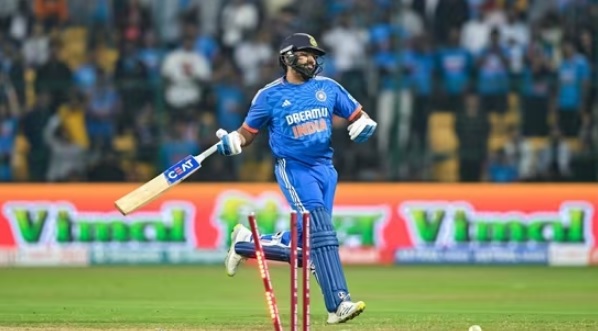
Deciphering Double Super Over rules and team switch reasons
The outcome of the 3rd T20I between India and Afghanistan hinged on two Super Overs. Here’s the essential information about the tiebreaker.
Who claims dead rubbers lack excitement? India and Afghanistan defied expectations in a historic T20I with a double Super Over—the first time in international cricket. After both teams scored 212 in the initial 20 overs and 16 in the first Super Over, a second Super Over was required. Amidst a dramatic and somewhat controversial sequence of events, India triumphed in an unforgettable T20I.
Who, what, how, where, and when? Don’t worry, we’ve got you covered. Although the notorious boundary count rule was scrapped after the 2019 World Cup final between England and New Zealand, the double Super Over rule has its own intricacies that many might not be acquainted with. So, sit back and relax as we guide you through all its nuances.
The same bowler cannot bowl the second Super Over
A bowler who has completed the first Super Over cannot participate in the second, explaining why neither Azmatullah Omarzai nor Mukesh Kumar bowled in the second Super Over. Both had delivered outstanding performances, conceding only 16 runs – a commendable effort in the context of a decisive over. With the match extending to another set of six deliveries, Afghanistan had to rely on Fareed Ahmed. Despite initially conceding a six and four, he recovered well to limit India to 11 runs. While the 12-run target didn’t appear daunting, credit goes to captain Rohit Sharma for an unconventional move—bringing in leg-spinner Ravi Bishnoi, who took two wickets in three balls, securing India a memorable victory.

What’s with the batting switch?
The team batting first in the initial Super Over must bat second in the subsequent one, adhering to the same rule. In the event of a tie, the team that batted second in the designated 20 overs will take the first batting position in the Super Over. This explains why Afghanistan batted first after matching India’s 212/4 with 212/6 of their own. Conversely, since India batted second, it was expected for them to take the first innings in the second Super Over. In summary, in Super Overs, a team cannot bat first and chase in consecutive innings.
Ok, so the bowler can’t bowl, but the batter can bat!
It varies. According to MCC laws, a batsman dismissed in the first Super Over is ineligible to bat in the second. Ahead of the Super Over commencement, both teams agree on a list of designated batters. If a batsman is listed for the first Super Over but doesn’t bat or isn’t dismissed, they remain eligible for the second. Likewise, if the player is retired hurt, they are permitted to participate in the second Super Over.
India’s choice of Sanju Samson over Yashasvi Jaiswal was a tactical decision—Jaiswal, the left-handed opener, had remained unbeaten in the first Super Over. However, Rinku Singh batted in the second Super Over as he had not been dismissed in the first, having replaced Rohit. The confusion surrounding why Rohit batted persists. The distinction lies in being retired and being retired ‘out.’ If a batter is retired, they can bat again, but in the case of the latter, they cannot. Despite Rohit having ‘retired out,’ suggesting he shouldn’t have batted, he did so, indicating he might have retired to allow Rinku’s fresh legs to handle running between the wickets.
In the unlikely event of the second Super Over ending in a tie, what happens?
In such a scenario, the procedure is uncertain. A third Super Over is initiated, and the process repeats until a winner emerges. Last night’s match marked the second instance of a Double Super Over, with the first occurring in the IPL 2020 clash between Mumbai Indians and Punjab Kings. Although a triple Super Over hasn’t been witnessed, considering the evolving nature of cricket, it shouldn’t be ruled out. The possibility exists; it’s just a matter of when it will unfold.


